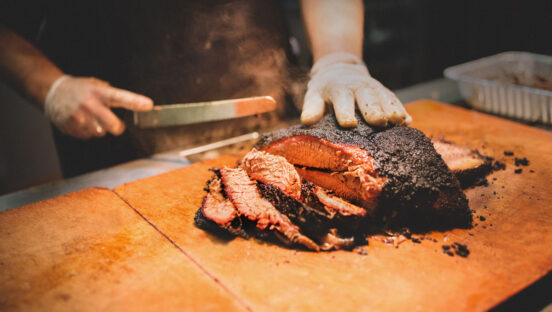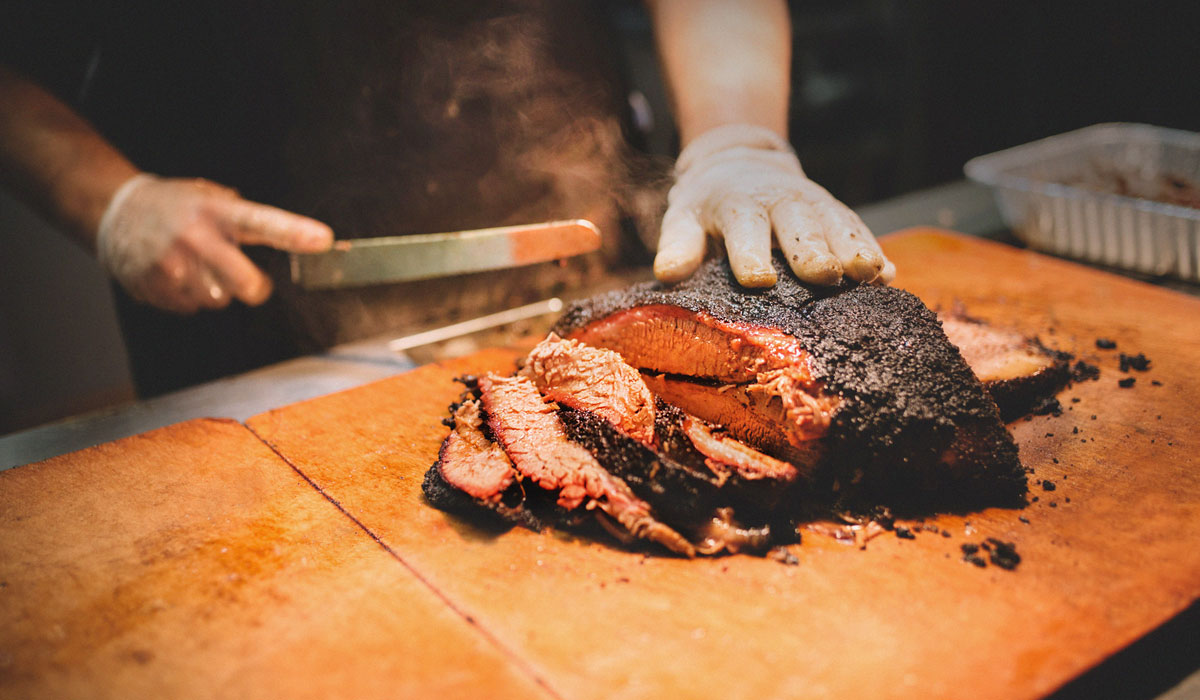Greg Welch enjoys the art of barbecue. It only seems natural, as he is head pitmaster and barbecue developer at City Barbeque. The brand began in 1999 when an award-winning barbecue team bought an old doughnut shop in Columbus, Ohio, as an outlet for serving their authentic smoked meats to the Midwest. City Barbeque has since grown to more than 35 locations with a dedication to serving competition-level barbecue with backyard hospitality.
Welch explains how the brand has leveraged smoking and grilling meats for fast-casual success.
How would you define grilling?
I would define grilling as cooking meat or any product over a direct fire or direct heat. The difference between grilling and smoking would be that smoking uses a more indirect heat for a longer period of time.
How does grilling translate to fast casuals?
You think of fast casual as being quick service, and then you think of barbecue as taking a really long time. But once you’ve got all the effort in early, then the product is done. You can serve that really quickly. You can take the brisket that’s been smoked for 15–18 hours, slice it up, and sell it really fast as a sandwich. The main challenge is being able to forecast when the sales will be and what we need as far as product and not run out or have any left over.
What tools are you using to cook food over open flame?
Each joint is set up with different smokers. In the back of the restaurant, we also have grills that we use to finish some of the product, like the ribs and the chicken.
How did this become the restaurant’s core practice?
The owner and cofounder of our place, Rick Malir, started with a competition barbecue team. They went to the American Royal, which people in the barbecue world know as the Super Bowl of barbecue competition. They competed in that and won first place. So with that under their belt, they thought, “If we can do this in a competition, we can do it in a restaurant.”
It is the center of what we do. Our smoked meat is what we live by. People love barbecue, and that’s what we do. Everything we do is in-house, at each joint, fresh.
Do you have any other dishes that are on the flattop or open grill?
We have an open grill in each restaurant, where we grill our ribs for a few minutes after they’ve been smoked, and let the fire kiss the meat and glaze it a little bit. We mark the chicken and crisp it up before we serve it. We also have a flattop in each restaurant. We grill peppers and onions, and we grill our buttered Texas toast to create the More Cowbell sandwich.
Are there any trends in grilling that you’re tapping into?
We’re always looking ahead at what the best new equipment is, at what the market is telling us, and what new items are out there that we can use. We try to get a little bit better every day. We actually have people in our company that do that alone, looking at new and innovative ways to do our job better.
What innovations have you been able to make with the use of flame or grill?
We’re not trying to re-create the wheel. We go back to the traditional type of barbecue with the barbecue we do.
Which one of your signature items best spotlights the grill?
I would go back to when we won the American Royal with our brisket. We do brisket better than anybody. With that brisket, we make a sandwich called the More Cowbell. The brisket is grilled, then we slice it and lay it on the buttered Texas toast with provolone cheese, grilled onions and peppers, and creamy horseradish sauce. It’s got some crunchy onions on it, and it is fantastic.












